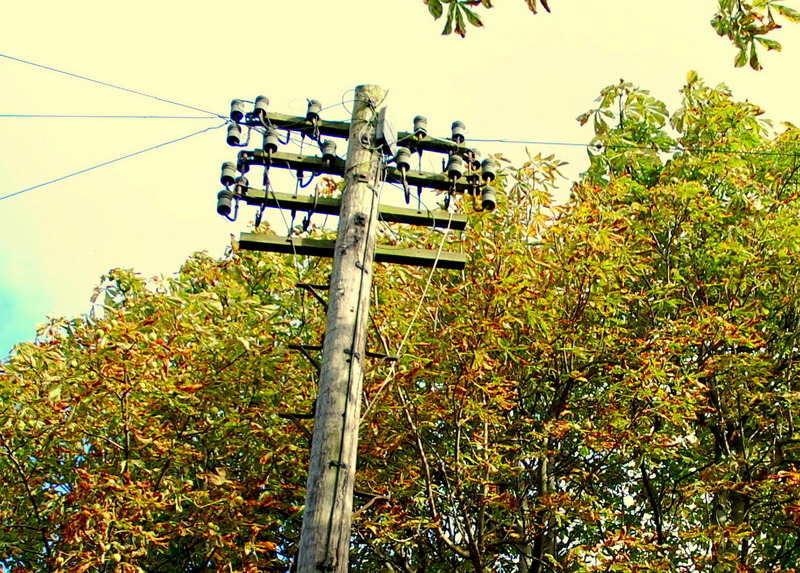I’m a telephone and broadband engineer based in Eaglescliffe, Stockton on Tees, and deal with, amongst other things home phone extension faults, and broadband problems.
Even after many years in the telecomms business, I’m still utterly amazed that broadband works at all, let alone at the speed it does when everything is hunky-dory. Even the most cynical of my colleagues are secretly impressed that we can enjoy downloads speeds of 17mb and above down a line that was originally designed to handle old-fashioned dial-telephones and voices.
Most folks would believe that their broadband runs over something you’d see in a science fiction movie. Nope. It’s a pair of wires, half a millimetre in diameter. That’s it.
Now, to get from the local exchange to you, they make a journey that might surprise you. The pyschedelic seaweed you see below is part of the story. This is a street cabinet, one of those green metal boxes in the street that you occasionally see engineers working on. The white/red/pink round things are push connectors filled with vaseline. Yes, it really is that crude.
It’s not quite so chaotic as it might seem, as the chaps who deal with these things have crafty, electronic ways of identifying which wire comes from where. As do we.
The journey continues-via holes in the ground, often water-filled…
Despite appearances, the next picture was not taken in the 1920s, but a few years ago, in my neighbourhood, and it remains in place to this day The round, white things are probably at least fifty years old, and are out of use, but the wires around them are busy at work carrying broadband and telephone signals. Yes, broadband comes to you using telephone poles, often on the last part of its journey, and vulnerable to birds, ladders, trees, high trucks, and strong winds.
It may arrive at high speed in your house, but that’s when the trouble starts…
Eventually, the single pair of copper wires, 0.5mm in the middle, will arrive at your house on the back of the BT/Openreach master socket. Here’s the back view of one we removed from disconnected BT lines in a building about to be refurbished.
And then your broadband signal has to navigate around the cabling in your house, much of it hidden, and only as good as the person who put it in, and may not have done it to professional standards. As a telephone and broadband engineer, I spend much of my time sorting out less-than-professional-standard wiring…Not surprisingly, on this journey from the telephone exchange, your broadband signal can encounter all kinds of challenges, including dirty or broken joints or cables, intermittent interference, birdy poo, rats, and tree branches. Hence, sometimes it does not work. Or, worse still, has the occasional electronic sulk or go-slow.This is where we can help. We’re able to rule out any faults at your end of the wires, so that any problems can be referred back to your provider. I’ve already blogged on how to use your Your Master Socketproperly elsewhere.
Why Your Master Socket Is Important
One of the most frustrating problem to face it the to and fro of “it’s your fault/no, it’s YOUR fault” between the customer and the broadband company. We can at least rule out your end from being the trouble. Leave a comment here, drop us a mail via our contact page, or give us a call on 01642 205077 if you think we might be able to help.






why does an engineer have to go to an exchange to put a talk talk customer back to bt line
It may be because TalkTalk have their own, separate physical equipment in that particular exchange, and making the change cannot be done in exchange equipment software (as with a “BT to BT” move), but has to be a physical move of cabling from one area of equipment to another.